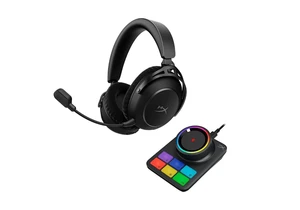Battery life has long been a key limiting factor in drone use. Although there are commercial models that can stay aloft for 45 minutes or longer on a single charge, being able to keep drones in the air for longer would be helpful for many purposes. Researchers at the University of Southern Denmark have been working on that issue for several years by developing drones that can recharge directly from power lines.
This time around, the scientists attached a gripper system to a Tarot 650 Sport drone, which they customized with a electric quadcopter propulsion system, an autopilot module and other components. When the drone's systems detect that the battery is running low, the device employs its camera and millimeter-wave radar system to pinpoint the closest power line, as New Atlas notes.
The drone then flies up to the power line from underneath, using a pair of inward-sloping arms to guide the cable into the gripper. An inductive charger pulls current from the power line. When the battery is full, the gripper opens and the drone continues on its way.
At the outset, the idea is for drones that inspect power lines to use this charging system. The researchers first showed off a self-charging drone that tops up its battery from power lines in 2022. This time around, they improved the gripper system and demonstrated a real-world use case for the tech.
In a paper they're presenting at next month's IEEE International Conference on Robotics and Automation, the team described the project as "to the best of our knowledge, a first-in-the-world system with the ability to sustain operation throughout many inspection/charging cycles powered by energy harvesting from power lines in a real outdoor environment." In arguably the most successful test, the drone stayed aloft for over two hours through five cycles of power line inspection and charging.
Drones have been ">used for years to monitor and inspect power lines. They're particularly useful in remote areas, such as mountain tops, where examining power lines manually is a tough ask. Still, it's hard not to feel a little uneasy about drones clamping onto power lines. If anything goes wrong and a drone somehow ends up damaging a power line, an entire region could lose electricity. Charging pads for drone exist and may be a safer option, but they'd require extra space for infrastructure.
This article originally appeared on Engadget at https://www.engadget.com/drones-that-charge-on-power-lines-may-not-be-the-best-idea-163942109.html?src=rss https://www.engadget.com/drones-that-charge-on-power-lines-may-not-be-the-best-idea-163942109.html?src=rssConnectez-vous pour ajouter un commentaire
Autres messages de ce groupe

This week's Meta AI chatbot leak could have repercussions for the company beyond bad PR. On Friday, Senator Josh Hawley (R-MO) said the Senate Committee Subcommittee on Crime and Counterterrorism,

The Apple iPhone event is right around the corner, which m

The state of Louisiana is suing online gaming platform Roblox, alleging that it fails to adequately protect


"Duffy to announce nuclear reactor on the moon" is not a headline

HyperX has announced its latest flagship wireless gaming headset, and once

